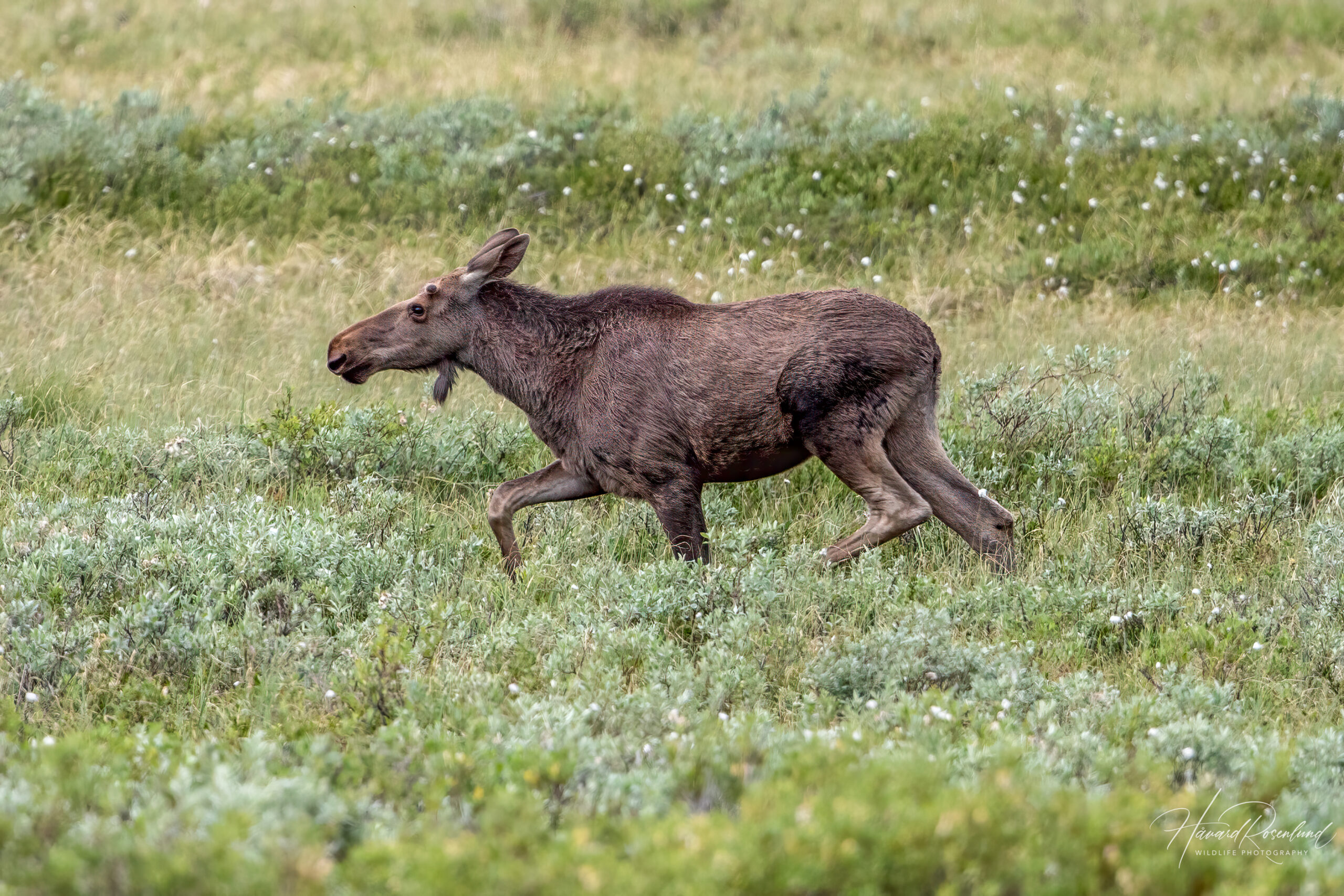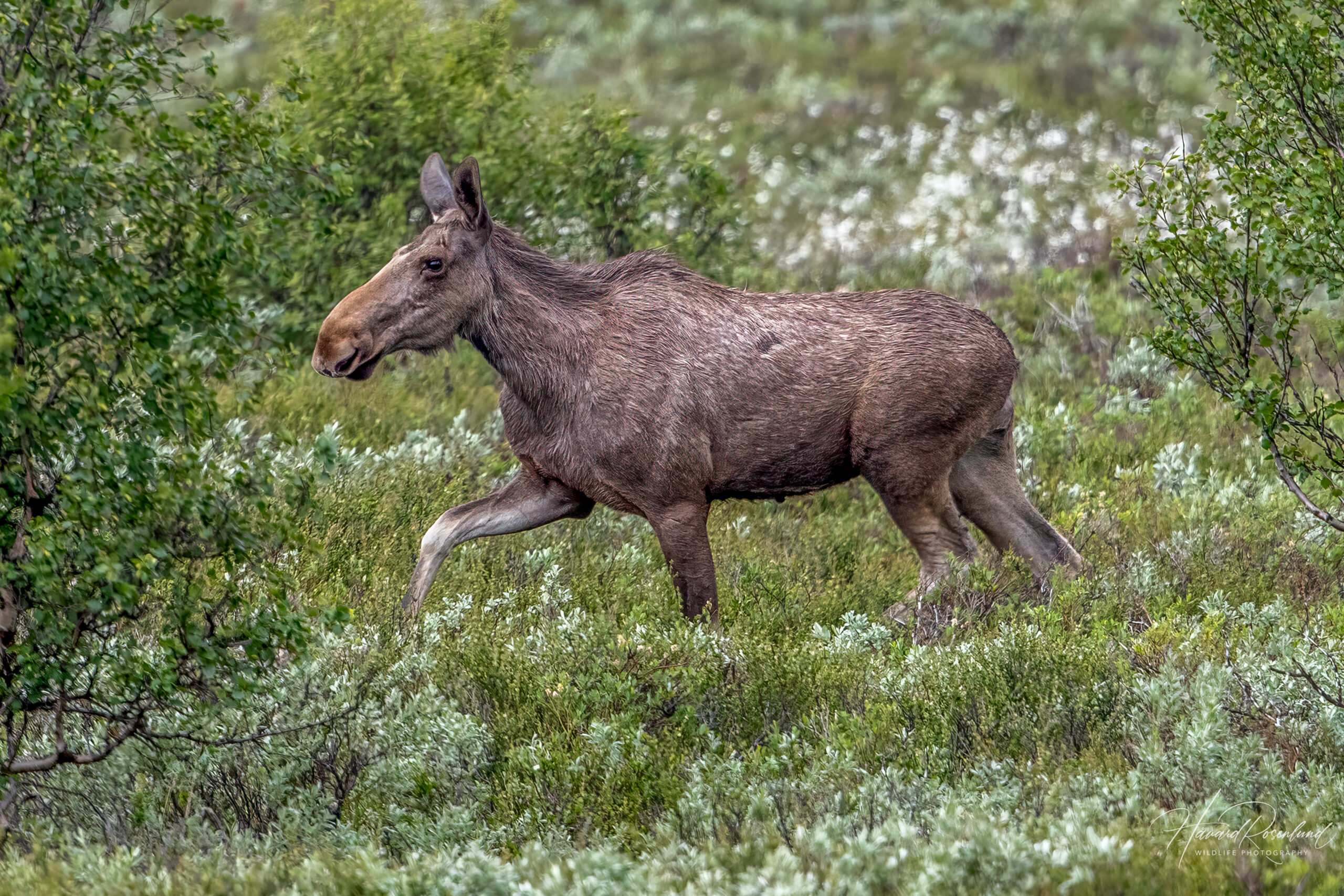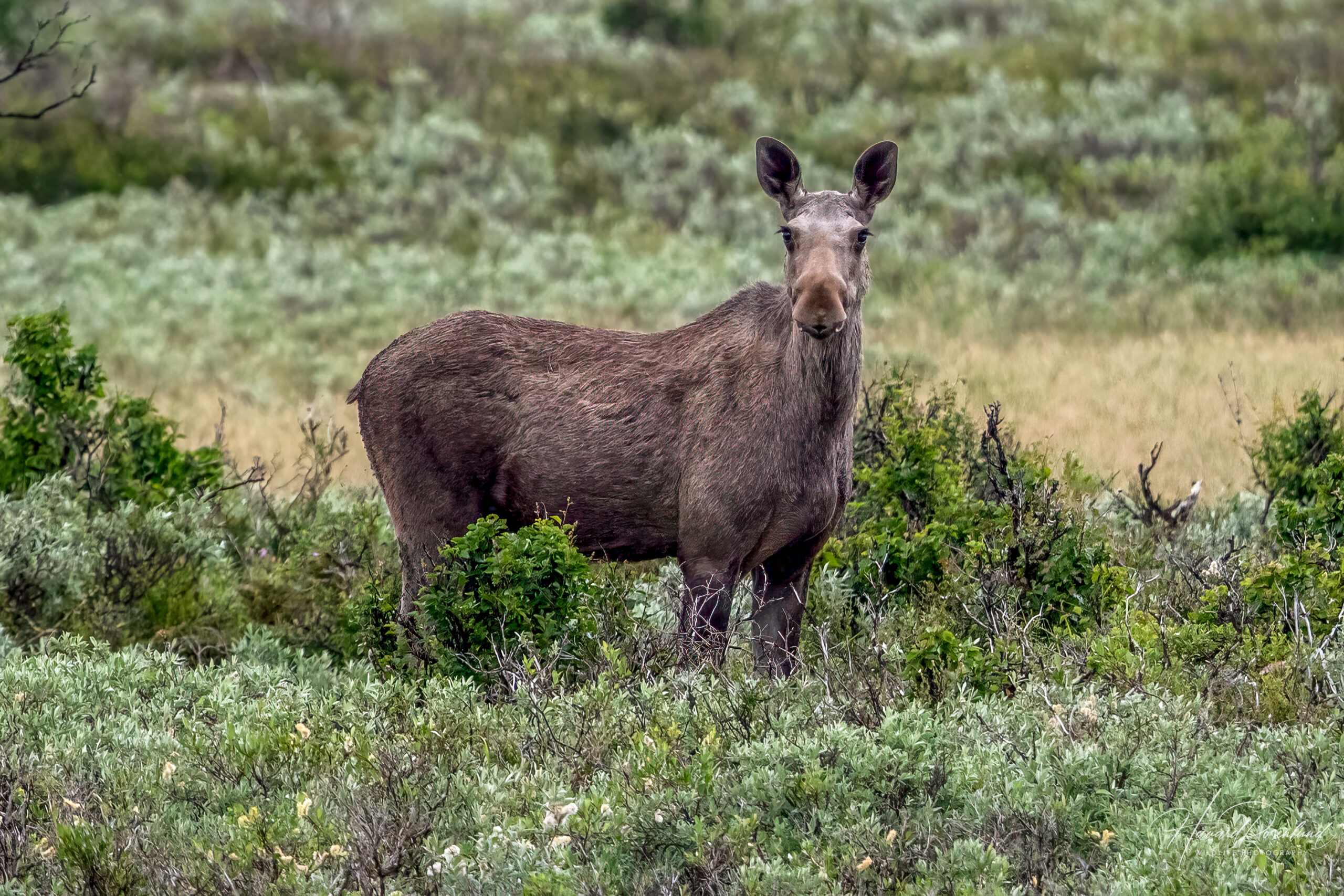Description
The moose (Alces alces) is the largest and heaviest extant species in the deer family. Most commonly found in the northern regions of North America, Europe, and Asia, its distribution spans from the temperate to subarctic climates, where it is well adapted to snowy environments. Adults stand 1.4–2.1 m (4 ft 7 in – 7 ft) high at the shoulder. Males (bulls) can weigh up to 700 kilograms (1,540 pounds), while females (cows) are slightly smaller. Both sexes have a distinctive muzzle, long legs, and a hump on their shoulders, making them uniquely adapted to browsing higher vegetation. Bulls are notable for their large, palmate antlers, which can span across 1.8 meters (6 feet). These are shed annually during winter and can grow at a rate of up to 2.5 cm (1 inch) per day until fully grown in August-September, making them one of the fastest-growing animal organs.
The Eurasian moose (known as the Eurasian elk in Europe) and the American moose differ in size, antler shape, and body proportions. This has lead some to suggest that these to variants should be split into two separate species. Both variants include several recognized subspecies across their range.
Diet & habitat
Moose inhabit boreal and mixed deciduous forests to marshland and riparian zones across the Northern Hemisphere, with a preference for colder climates. They feed on a wide variety of plant materials, including leaves, bark, pine cones, and aquatic vegetation. Moose are particularly adapted to feeding on tall plants and shrubs, thanks to their height, as well as the ability to browse underwater plants in marshes, lakes, and riversides. They are excellent swimmers and have been known to dive underwater to reach aquatic plants, holding their breath for 30 seconds or more.
Behavior & aggression
Moose are generally solitary animals, with bulls and cows coming together only during the mating season. They are known for their ability to swim, being able to swim up to 10 miles without a break, using their long legs to wade deep waters. They often seek water to escape predators, cool down, or find food.
Moose are generally non-aggressive towards humans but can become confrontational if provoked or during rutting season. The danger to humans can occur if a moose feels threatened, especially mothers with calves. Moose are also known for their ability to move quietly through dense forests despite their size.
Reproduction
The mating season, or rut, occurs in late September and October. During this time, bulls compete for access to cows by displaying their antlers, engaging in fights, and vocalizing. Following a successful mating, the gestation period for a moose is about 230 days, leading to the birth of one or two calves in spring. Calves are weaned after a few months but may stay with their mother for a year until the next breeding season. Moose reach sexual maturity at around 1.5 to 2.5 years of age.
Status
The moose has a wide distribution and a large total population size, which is believed to be increasing. It is classified as least concern on the IUCN Red List. However, local populations can be affected by habitat loss, over hunting, vehicle collisions, and climate change. Conservation efforts are focused on habitat protection and management of hunting practices to ensure stable population levels.










